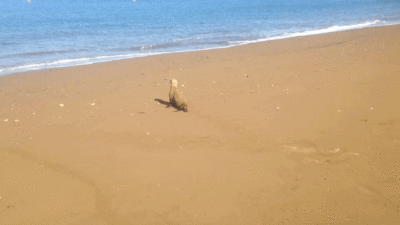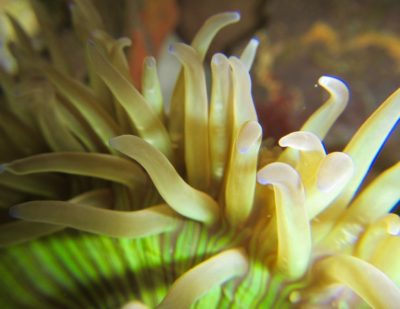
When discussing the difference between the seal vs. sea lion we can find five main differences that have to do with their anatomy and character traits. The first difference between the seals and sea lions that we will discuss is the shape of their bodies and front fore flippers. The California Sea Lion as pictured in the video have two large fore flippers that they use to help walk on land as well as swim in the water. They are typically slimmer and do not have as much fat as the seal as well. While the Elephant Seal, as pictured and other common seals such as the Harbor Seal, have much smaller fore flippers only used to help swim. They do not use their flippers to walk on land rather “wiggle” their large bodies to help them move. The next notable difference between seals and sea lion has to do with their face and snouts. Sea lions have a large pointed snout, giving the sea lion the look of a slimmer face. While the seal has a compacted snout, giving it a larger and rounder head and face. To finish up the anatomical difference between the two we look at their ears. Sea Lions have large “floppy” external ears while seals have internal ears. Moving on to the traits and habits of seals and sea lions we typically see two main differences. The first is how these two move in the water and surface for air. Sea lions do something called porpoising! Porpoising is when these sea lions will jump completely out of the water in similar fashion to that of dolphins. On the other hand seals will swim completely submerged under water and will come up to take a breath every 5 or so minutes. When they do they will only stick out their head and observe their surroundings. This act is called periscoping. And the final difference between seals and sea lions is the sound that they emit. Sea lions will “bark” like that of dogs while seals will emit a “snarl”. These conclude the five main differences between seals and sea lions. While there are other differences between the two, these are the most notable and talked about differences.
Here on Catalina Island we often see juvenile pinnipeds (seal and sea lions) wash ashore on our beaches. One pinniped in particular is the Northern Elephant Seal. These seals are typically pups that are being weaned from their mothers. When the pups are born they are around 4ft long and weigh about 75lbs (pounds). They will suckle for about 28 days and gain an average of 10lbs (pounds) a day! These elephant seals have some of the richest milk of any pinnipeds in the world averaging about 50% of the milk being actual fat. These elephant seal pups will quadruple in weight from the original 75lbs to an astonishing 250 to 350lbs!! At the end of the suckling period the mother elephant seals will abandon their pups to return to feed leaving these pups to fend for themselves and come ashore. As these pups come ashore to various different locations they will lose some of their weight gained from their mothers and learn how to fend and feed for themselves. We also see juvenile sea lion pups come ashore as well. These pups are usually moved out of their rookery leaving them to feed and fend for themselves as well. If you every see a seal or sea lion pup washed ashore it is best to let them rest and not interfere. These are crucial stages for these animals and any help given to them could cripple their growth and ability to feed for themselves.


